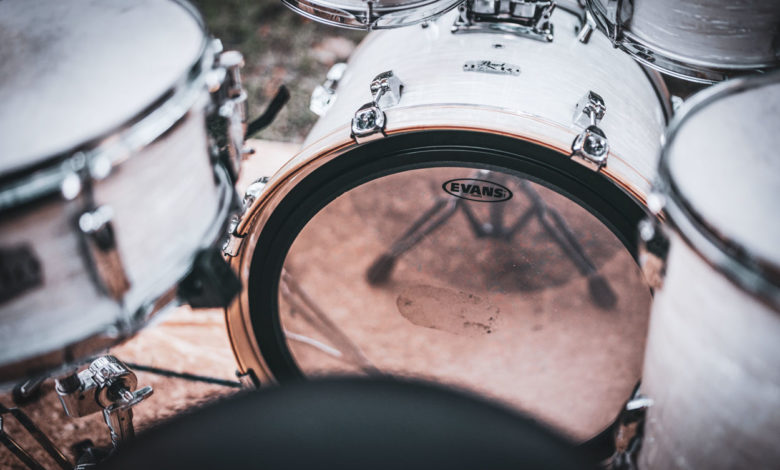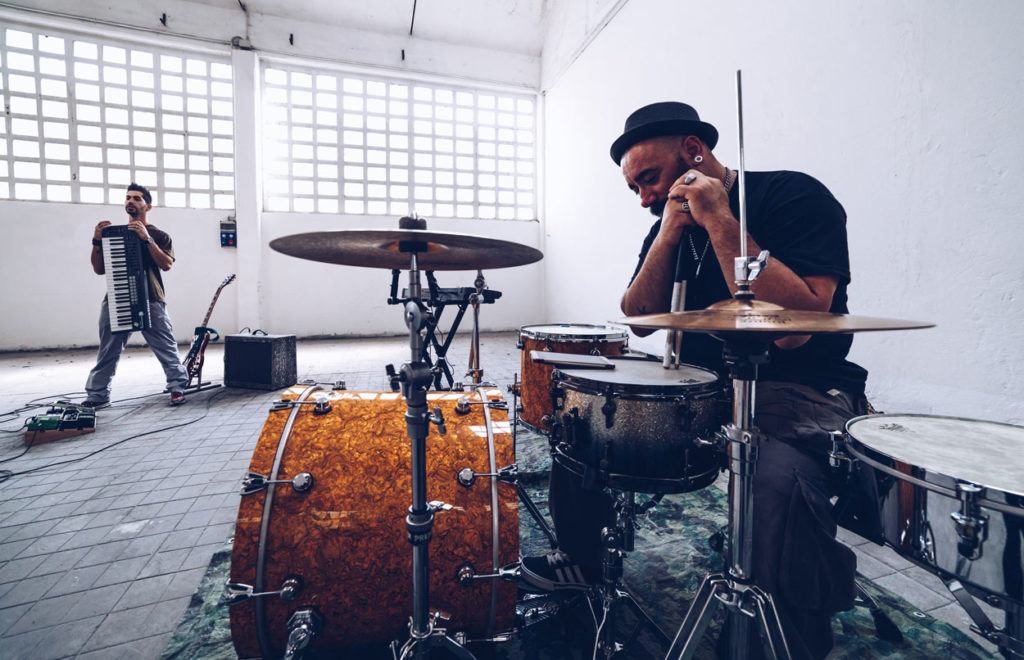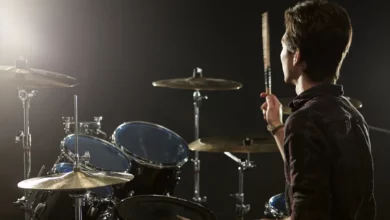
We may earn a commission from the affiliate links on this site. Learn more›
There is one universal truth about playing the drums: they’re quite loud. For many drummers, playing can be troublesome in apartments and shared living spaces.
Fortunately, there are ways around the noise, and today I’ll be sharing the ways you can get away with playing drums in an apartment.
1) Cover Your Drums with Towels

While not the most technological innovation, covering your drums with heavy-weight towels will dampen the volume considerably. You may need to use quite a few layers to achieve adequate reduction depending on your situation.
For the cymbals, poke a small hole in the towel and place it on the cymbal dowel and replace the wing nut.
Using towels has a downside: your rebound will be affected drastically. Working on technique and other aspects of your playing will be much more difficult in this circumstance.
For those looking for a budget or DIY solution, look no further than using your old towels. While not the best solution, it does show your neighbors and roommates you’re making a solid effort to keep the noise down.
I’ve used towels before, but only in the situation of playing live without amplification, not practice. I have never liked the effect of the rebound on the sticks, so I can’t recommend it personally. If it’s your only option, dig out those old towels.
2) Rent a Practice Space

For those with a little extra dough lying around, you may want to consider renting a practice or rehearsal space to practice the drums.
Rehearsal spaces are usually considered for bands who need a place to practice, but why not just for drums?
The downside to getting a practice space is cost. Rehearsal rooms can cost upwards of $25 to $50 an hour in some cities. This is most likely out of the league for most of us. Drumming is an expensive hobby, but not that expensive.
For those interested in finding a spot, check out Rehearsal Space Finder and see if there’s a listing near you.
3) Use Drum Mutes
Similar to using towels, drum mutes are useful products that are designed to dampen the sound and reduce the volume output of our loud drums.
Companies like Vic Firth and Evans make synthetic rubber pads that fit over your drum heads.
These products do an okay job, but I’ve found that an even better option is using clip-on mesh drum heads like these ones from RTOM.
Some mesh heads will completely replace the existing drum heads on your shells, so you won’t get the sound experience from playing the drums, but your kit will be much quieter.
The heads from RTOM are different, in that they clip on to your existing drum heads, reducing the volume output by 80%.
The mesh heads from RTOM retain the tone of your drums, so you won’t be missing the sound of your snare drum or toms. The only adjustment you may need to change on your drums is the height, as they do raise the profile (about an inch and a half) of the top of your real drum head.
RTOMs mesh heads are available in sizes from 10″ to 24″ and can either be bought in a pack or individually.
Note: for those with die-cast hoops, you’ll need to buy an additional clamp for these mesh heads.
RTOM, for those unaware, is the same company that makes our favorite dampener: Moongel.
For cymbals, rubber dampeners will work, but I’d opt for using quiet practice cymbals like the Zildjian L80 or Gen 16.
4) Buy a Portable Isolation Booth
There’s a lot of misinformation available on the internet. One of the most common myths when it comes to sound is the idea of soundproofing.
I just watched a YouTube video that claimed foam panels are a robust form of soundproofing for playing drums. This couldn’t be further from the truth.
To soundproof a room for drums with a noticeable reduction in decibel levels, you need to construct a “room inside a room” essentially. This is common in recording studio construction.
When living in an apartment, this type of modification is not possible, no matter your construction prowess. You can try using soundproof curtains, but you still most likely won’t get the result you desire.
On the more expensive side of the spectrum are companies like Whisper Room and Studio Box. Both specialize in portable isolation or practice booths.
Isolation booths are exceptional, as they will provide the most effective decibel reduction when practicing acoustic drums in an apartment. They can be set up in the room with the drum set and taken down when moving to a new location.
Whisper Room and Studio Box iso booths are also ideal as they don’t require modification to an existing room as you’d typically need when considering soundproofing.
As stated, this solution is costly, as the average Whisper Room is around $8,000 according to their website.
5) Play an Electronic Drum Set
I own the Alesis Strike electronic drum set. My original intentions for purchasing were to have a kit that would quiet enough to play at night. It is, to my delight.
Playing an electronic drum kit is easily the most conceived way to play drums in an apartment. In fact, I bought my first electronic drum set ten years back for this very reason.
I had a Yamaha DTXpress IV when I lived near my university. It wasn’t the most excellent drum kit around at the time, but it was okay for practicing. Friends who came over loved playing on it, and I enjoyed my time using it before I sold it.
There was one issue though: my neighbor next to my room. She hated the fact that I played the drums, even though they were electric.
The DTXpress IV had older style rubber pads, which are far louder than mesh heads of today. She could easily hear my playing through the thin walls of the apartment.
I ultimately never had a solution to this issue; instead, I just resorted to playing during the day when I could.
If you need a small electronic kit for practicing in an apartment or shared living space, I’d suggest reading up on the Alesis Surge Mesh or the Alesis Nitro Mesh.
6) Move To The Garage
If you’re fortunate enough to have an apartment that features a detached garage, you should be able to practice without annoying anyone. This is exactly what I did and fortunately, our set of garages was far enough from everyone else, so I didn’t annoy anyone.
The only downside, of course, is in summer when it’s insanely hot in the garage with the door closed. Keep that in mind if you have an expensive drum set baking in the heat. Maybe get yourself a practice kit just for the garage.
Conclusion
As you can tell, there is no one-fits-all solution to practicing the drums in an apartment. It’s your responsibility to work out an agreement with the neighbors and roommates to practice your craft.
If you live around people that can’t tolerate hearing your practice at all, you may have to pack your bags and move out to a new location, unfortunately.
Do you play drums in an apartment? What is your strategy? I’d love to hear about your experience in the comments down below. Thanks for reading!





Thanks for the article! I’m moving into an apartment soon so I think I’ll invest in clip-on mesh drum heads. Hopefully we won’t get any complaints!
0